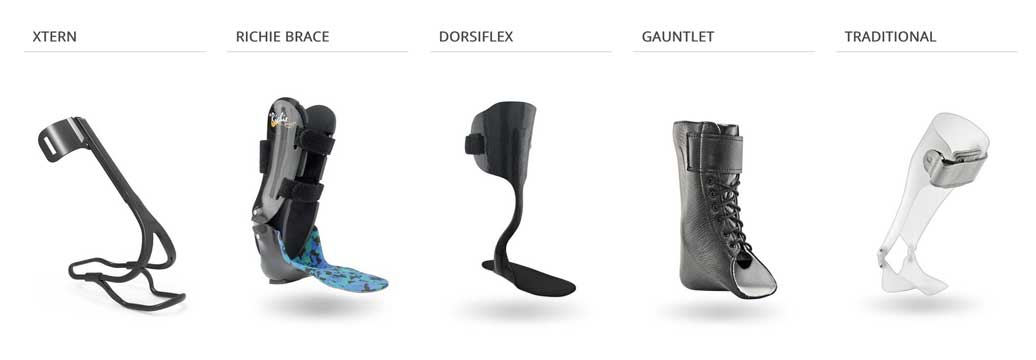In continuing the discussion of choosing the right AFO for the Patient. We have now assumed that the patient requires a custom fabricated AFO. This brief installment is by no means a substitute for reviewing a tremendous amount of literature, taking classes on custom AFO design and real-life experiences with patients and prescribing and adjusting custom fabricated AFO. The following questions are broken down into simple to read general categories of questions that require addressing prior to writing an AFO order.

General Shell Design Considerations:
As with OTC and custom-fitted AFOs there are some of the same issues:
Height of the AFO upright: The taller and heavier the patient the more likely that a shorter lever arm device will either be ineffectual or will simply be guillotined by the patient’s own anatomy. Generally, patients over 6’ and over 250 lbs. will require a longer lever arm device.
Malleolar Consideration: Does the shell encompass any part of the malleoli or is it pre-malleoli? The more of the malleoli that is covered by the shell the more frontal plane correction. There are AFO which contain both a posterior and anterior segment. The anterior segmented AFO are usually reserved for specific issues well beyond discussion here.
Shell Durometer: The greater the durometer (hardness) the more functional control but perhaps less shock absorbing the shell. The beauty of 3D printed devices is that they permit flexibility of the durometer at various locations on the shell. In very elementary terms one section of the AFO can be very hard while another (e.g. foot plate) can be more accommodative. Lamination with high strength materials is also possible. The patient’s activity (see below) needs consideration.
Hinges: Is there a need for full ROM, or control of the dorsiflex and/or plantarflex component? There are hinges which allow for full ROM and those which dorsiflex assist and plantarflex resist and those which assist both dorsiflexion and plantarflexion. Even with assistance in either direction, should this be limited and does the patient require a plantarflexion or dorsiflexion stop?
Soft Tissue Interface: Does the patient have any prominent osseous or other issues (vascular, muscle atrophy, dermatological, etc.) requiring protection from the shell?
Posting: Does the patient require frontal plane correction posting?
Footplate: Length? As with foot orthotics, will the foot plate be metatarsal head, sulcus or full length? Does the foot plate need to be as rigid or less rigid as the uprights? Does there need to be additional footplate carveouts (e.g. first or fifth ray cut outs, etc.), accommodations for prominent bone or other issues (e.g. neuromas, sesamoiditis, etc.), Does there need to be a toe filler for a missing toe or toes?
Footwear: What is the reasonable expectation of the patient? Fortunately, today there are a myriad of footwear manufacturers which will accommodate most AFO. These include sandals which are extra-depth and have removable inserts which will accommodate a custom fabricated footplate. To match this properly, the footwear should either be sketched or sent to the fabricator of the AFO.
Without any specific shoe manufacturer in mind, there are also shoes where the vamp (top of the shoes) can be moved to one side of the shoe and allow the patient to place the AFO into the shoe and helicopter their foot directly into the shoe). There are also split heel counter shoes, which allow for an easier fit of the AFO and foot into the shoe.
Patient Activity Level: As was noted in the durometer section, failure to properly address the patient’s activity level will lead to an AFO failure. Some shell materials are considered pre-loaded and offer advantages and disadvantages to both sedentary and active patients. Careful consideration of these advantages and disadvantages is encouraged. Since there are so many possibilities, a discussion with a fabricator prior to ordering the AFO may offer the best solution.
These categories of questions are only the start of the questions one must answer to determine the proper design for your patients AFO.
As has been mentioned innumerably in the past, a thorough history and physical examination of the patient must be performed. Once that information has been documented, should you have any questions our expert team at KevinRoot Labs is ready to assist you in ordering the correct AFO for your patient.






